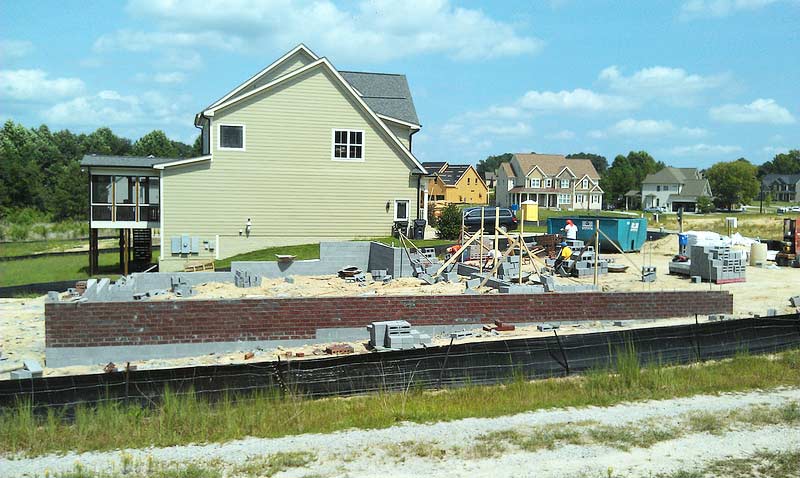Up until more recently, crawl space foundations were the primary type of foundation, but in recent years slab foundations have become increasingly popular. While there are advantages and disadvantages to each type of foundation, the choice ultimately comes down to a combination of personal preference and some regional considerations regarding the area in which the home is being built.
Slab Advantages
Slabs hold an advantage over crawl space foundations in geographic regions that are wet, but not prone to flooding. A slab can help to prevent mold growth because of the vapor barrier it provides. In addition, homes on slabs are at a lower risk of gas leaks and are lower to the ground eliminating the need for stairs or ramps. The concrete also blocks insects and other pests from inhabiting the area under the home. Financially, slab installation tends to be cheaper and quicker than crawl space foundation installation. Slabs typically last around 50 years which is about the same as a properly cared for crawl space foundation, but in comparison a slab is typically stronger and more durable.
Slab Disadvantages
Tree roots, earthquakes and shifting soil can all damage slabs. If a concrete slab takes on damage, it can be difficult and expensive to repair. Concrete floors are additionally hard on the feet and back which can make comfort an issue. Lastly, any duct work or plumbing with a slab foundation can be difficult to access.
Crawl Space Advantages
Crawl spaces can work well in dry climates, climates prone to flooding and in slopped regions. These foundations work better in earthquake regions and with soils that are more prone to sliding. In addition, crawl space foundations provide easy access to plumbing and wiring and a way to easily check for terminate and other vermin. A well-insulated crawl space can provide good ventilation and offer a storage area. In addition, wood is typically the material of choice for crawl space foundations, making them more comfortable to walk on.
Crawl Space Disadvantages
Crawl spaces can be difficult to insulate well. In humid locations poor insulation can lead to mold and rodent issues. Crawl-space foundations also can’t compete with a slab foundation for energy costs. It’s much more expensive to heat and cool a home with a crawl space foundation. In addition to these disadvantages, crawl space foundations take longer to build and can be much more expensive than a slab foundation and can cost up to $25,000 in comparison to the max cost of $12,000 for a slab. Lastly, crawl-space foundations require stairs and can be difficult for those challenged with mobility. This makes crawl-foundations inconvenient for retirement homes.
Both slab and crawl space foundations offer a range of advantages and disadvantages, but ultimately it comes down to a couple key points. Where are you building the house? Will the area be on a slope, prone to shifting soil, or earthquakes? Is the region dry, humid, or prone to flooding? Is budget a consideration? Could you effectively install a ramp for of mobility challenged individuals, or is that not practical? Answers to these questions along with personal preference can help the future homeowner determine the best foundation for their home.
Featured Image: “Foundation” by Jesus Rodriguez, used under CC BY / Lightened and color-corrected from original





